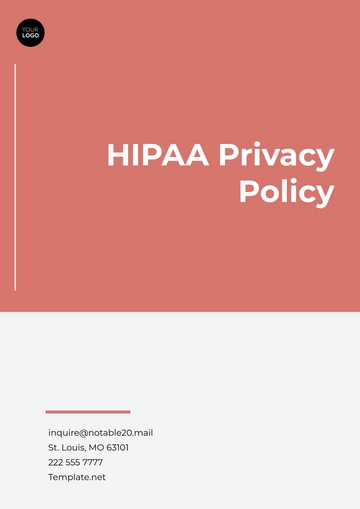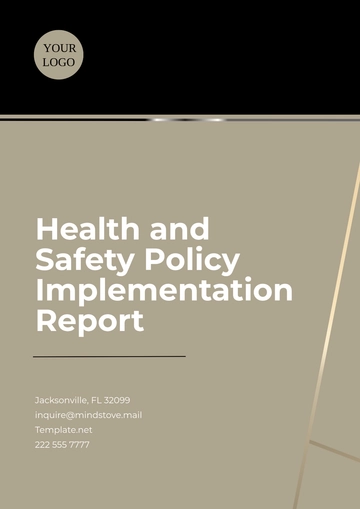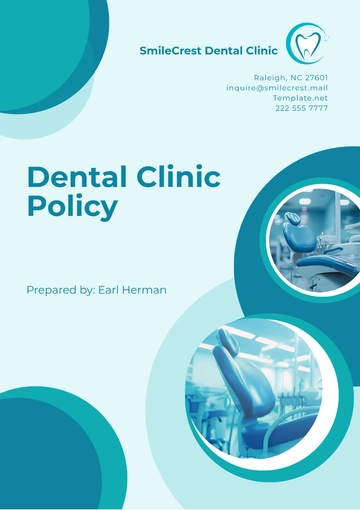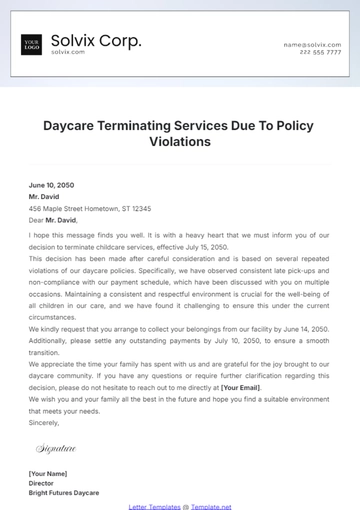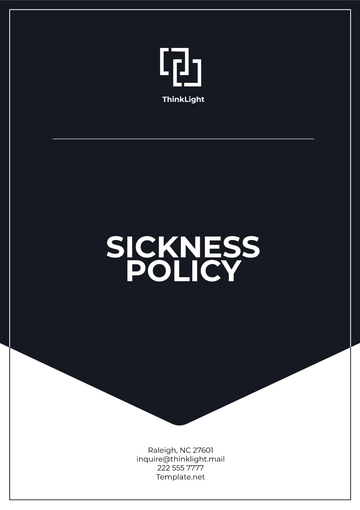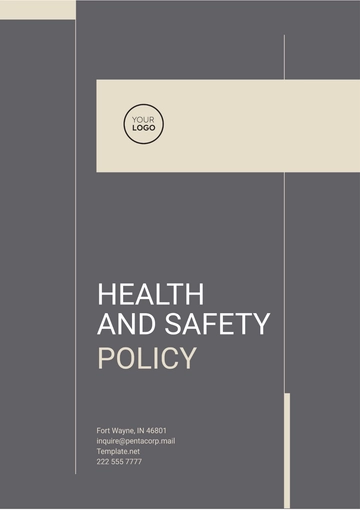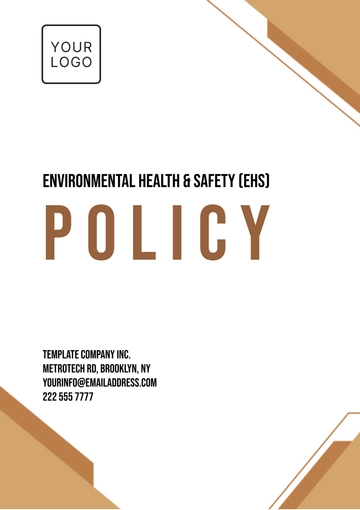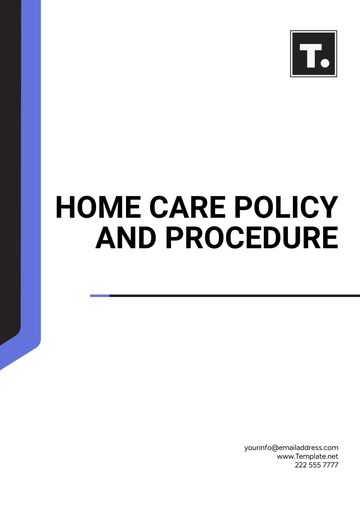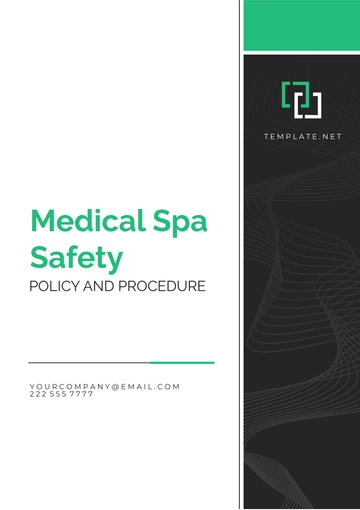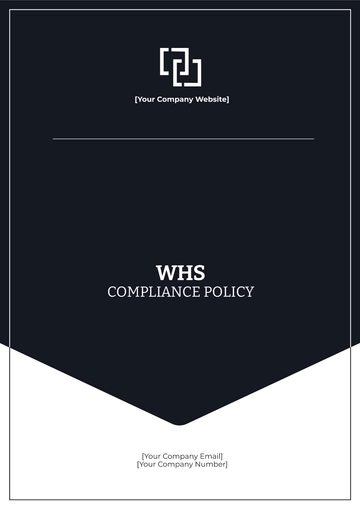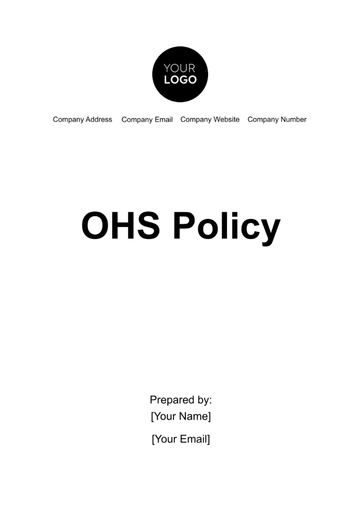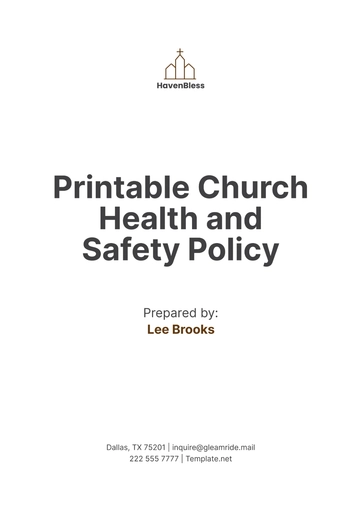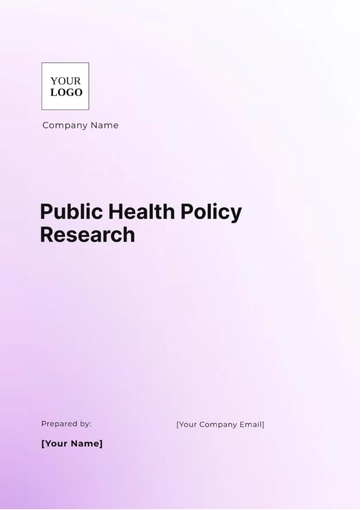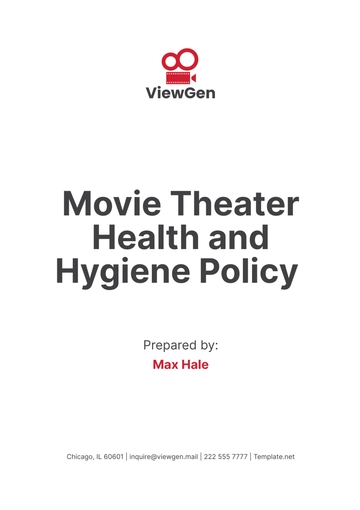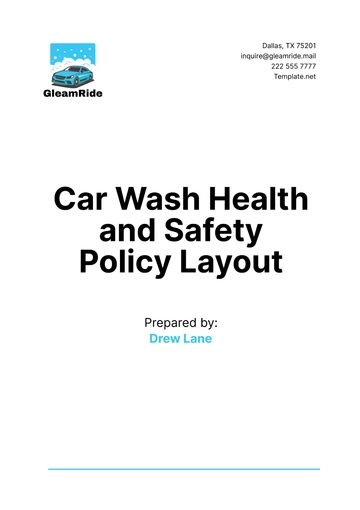Free Health & Safety Smoking Policy

1. Introduction
1.1 Purpose
The purpose of the Health & Safety Smoking Policy at [Your Company Name] is to provide a clear framework for managing smoking-related activities within the workplace. This policy is designed to ensure a safe and healthy environment for all employees, contractors, visitors, and any other individuals who may be present on [Your Company Name]'s premises. By establishing strict guidelines regarding where smoking is allowed, we aim to mitigate the health risks associated with smoking and protect non-smoking employees from the adverse effects of secondhand smoke. As we move toward the year 2050 and beyond, this policy will evolve to incorporate advancements in health research, changes in legislation, and emerging best practices to ensure ongoing relevance and effectiveness.
1.2 Scope
This policy applies universally to all individuals who are on [Your Company Name]'s premises, including full-time and part-time employees, temporary staff, contractors, clients, visitors, and any other external parties. It encompasses all indoor areas within the company's buildings, as well as outdoor spaces such as parking lots, landscaped areas, and any other company-owned or leased properties. The policy also covers events organized by [Your Company Name] outside the usual workplace, ensuring that smoking regulations are consistently enforced across all company-related activities.
1.3 Definitions
Smoking: Smoking refers to the act of inhaling, exhaling, burning, or carrying any lighted or heated cigar, cigarette, pipe, or any other tobacco or plant product intended for inhalation. This definition includes electronic cigarettes and other vaping devices.
Secondhand Smoke: Secondhand smoke is the smoke that is exhaled by a smoker or that comes from the burning end of a cigarette, cigar, or pipe. This type of smoke contains numerous toxic chemicals that can have harmful effects on non-smokers.
Designated Smoking Area: A Designated Smoking Area (DSA) is a specific location on company premises where smoking is permitted. These areas are clearly marked, equipped with appropriate waste disposal facilities, and situated to minimize exposure of non-smokers to smoke.
2. Smoking Prohibition
2.1 General Prohibition
Smoking is strictly prohibited in all enclosed areas of [Your Company Name]’s premises. This comprehensive ban includes all office spaces, meeting rooms, restrooms, elevators, stairwells, cafeterias, break rooms, and reception areas. The prohibition extends to all areas within company-owned or leased buildings and facilities, ensuring that employees and visitors are not exposed to smoke in any indoor environment. By implementing this policy, we aim to create a clean and healthy atmosphere conducive to productivity and well-being.
2.2 Enforcement
Enforcement of the smoking prohibition will be managed through regular inspections and monitoring by designated staff members. Employees who are found smoking in prohibited areas will face disciplinary action, which may range from a formal warning to more severe penalties depending on the frequency and severity of the violation. The disciplinary measures are intended to reinforce the importance of adhering to the smoking policy and to ensure a smoke-free environment for all. Contractors and visitors who do not comply with the policy will be informed of the violation and may be asked to leave the premises. Repeat offenders may face restrictions on their ability to access company facilities in the future.
3. Designated Smoking Areas
3.1 Location
Designated Smoking Areas (DSAs) are carefully chosen to balance the needs of smokers with the health and safety of non-smokers. These locations are selected based on factors such as:
Proximity to Building Entrances: DSAs are placed away from main entrances to minimize the impact of smoke on those entering or leaving the building.
Ventilation and Air Flow Considerations: Adequate ventilation is essential to ensure that smoke does not drift into non-smoking areas. DSAs are situated in areas with natural or mechanical ventilation to dissipate smoke effectively.
Accessibility for Employees: DSAs are easily accessible to all employees who choose to smoke, ensuring that the policy does not unduly inconvenience those who wish to use these designated areas.
Compliance with Local Regulations: The location of DSAs complies with local regulations regarding smoking in public places, ensuring that [Your Company Name] adheres to all legal requirements.
3.2 Maintenance
To maintain the cleanliness and functionality of DSAs, regular maintenance and cleaning schedules are implemented. DSAs will be equipped with appropriate waste disposal bins and ashtrays, which are emptied and cleaned regularly to prevent accumulation of litter and ensure a hygienic environment. Maintenance staff will conduct routine inspections to address any issues related to the condition of the DSAs, such as damage or inadequate waste disposal facilities. Feedback from employees regarding the condition of DSAs will be taken seriously, and any reported issues will be promptly addressed to ensure that the smoking areas remain pleasant and functional.
3.3 Signage
Each Designated Smoking Area (DSA) will be clearly marked with visible and informative signage. Signs will indicate that smoking is permitted in the designated area and will provide instructions for the proper disposal of smoking materials. Signage will be designed to be easily readable and will include symbols and text that clearly communicate the smoking policy to all individuals on the premises. Additionally, periodic reviews of signage will be conducted to ensure that it remains up-to-date and effective in conveying the policy requirements.
4. Employee Responsibilities
4.1 Compliance
All employees are expected to adhere to the Health & Safety Smoking Policy by:
Refraining from Smoking in Non-Designated Areas: Employees must ensure that they only smoke in the designated smoking areas and avoid smoking in any prohibited zones.
Utilizing DSAs for Smoking Activities: Employees who smoke are required to use the DSAs and comply with all associated rules and guidelines to minimize the impact on non-smokers.
Disposing of Smoking Materials Properly: Employees must dispose of cigarette butts, ash, and other smoking-related waste in the provided receptacles to maintain cleanliness and avoid creating fire hazards.
4.2 Reporting Violations
Employees who observe any violations of the smoking policy are encouraged to report these incidents to their immediate supervisor or the Health & Safety Officer. Reports can be made anonymously if desired, and the company will take all reports seriously. The Health & Safety Department will investigate reported violations promptly and take appropriate corrective actions, which may include additional training, policy reinforcement, or disciplinary measures. Ensuring that employees feel comfortable reporting violations is crucial to maintaining a safe and compliant workplace.
5. Health and Safety Considerations
5.1 Health Risks
Smoking and exposure to secondhand smoke are associated with a range of serious health risks. These include:
Respiratory Diseases: Conditions such as asthma, chronic bronchitis, and chronic obstructive pulmonary disease (COPD) can be exacerbated by smoking and secondhand smoke exposure.
Cardiovascular Conditions: Smoking is a major risk factor for cardiovascular diseases, including heart disease, stroke, and hypertension.
Cancer Risks: Smoking significantly increases the risk of developing various cancers, particularly lung cancer, but also cancers of the mouth, throat, esophagus, and bladder.
5.2 Secondhand Smoke
Secondhand smoke poses significant health risks to non-smokers, including children and pregnant women. It can cause respiratory issues, exacerbate existing health conditions, and increase the risk of developing cancer. By enforcing a strict smoking policy and providing designated smoking areas, [Your Company Name] aims to protect all individuals from the harmful effects of secondhand smoke and promote a healthier workplace.
6. Legal and Regulatory Compliance
6.1 Compliance with Laws
[Your Company Name] is committed to complying with all relevant local, state, and national laws and regulations concerning smoking in the workplace. This includes adherence to:
The Smoking Ban Act: Legislation that prohibits smoking in enclosed public spaces and workplaces.
Workplace Safety and Health Regulations: Standards that ensure the health and safety of employees, including regulations related to smoking and air quality.
Environmental Protection Laws: Laws aimed at reducing environmental pollution and protecting public health, including regulations on tobacco smoke.
6.2 Future Regulations
As we approach the year 2050 and beyond, [Your Company Name] will stay informed about and comply with any new or updated smoking regulations. The Health & Safety Smoking Policy will be reviewed and revised in response to changes in legal requirements, scientific research, and industry standards. This proactive approach ensures that [Your Company Name] remains compliant with evolving regulations and continues to provide a safe and healthy environment for all stakeholders.
7. Support for Smokers
7.1 Smoking Cessation Programs
[Your Company Name] is dedicated to supporting employees who wish to quit smoking by providing access to a variety of resources and programs. These include:
Smoking Cessation Counseling: Professional counseling services to assist employees in developing effective strategies for quitting smoking.
Nicotine Replacement Therapies: Access to products such as nicotine gum, patches, and lozenges to help manage withdrawal symptoms and reduce cravings.
Educational Materials: Informational resources on the benefits of quitting smoking, including pamphlets, online articles, and workshops.
7.2 Employee Assistance Programs
Employees seeking additional support with smoking cessation can utilize [Your Company Name]’s Employee Assistance Program (EAP). The EAP offers confidential and comprehensive support, including:
One-on-One Counseling: Personalized sessions with trained counselors to address individual needs and challenges related to quitting smoking.
Support Groups: Group sessions where employees can share experiences and receive encouragement from peers who are also trying to quit.
Wellness Resources: Access to online tools, mobile apps, and other resources designed to support smoking cessation efforts and promote overall wellness.
8. Policy Review and Updates
8.1 Regular Reviews
To ensure the Health & Safety Smoking Policy remains effective and relevant, it will be reviewed on an annual basis. The review process will include:
Impact Assessment: Evaluating the policy’s effectiveness in improving health and safety outcomes for employees and visitors.
Feedback Collection: Gathering input from employees, contractors, and other stakeholders to identify areas for improvement.
Regulatory Review: Ensuring that the policy aligns with current legal requirements and industry standards.
8.2 Policy Updates
Any necessary updates to the policy will be communicated to all employees through various channels, including internal memos, emails, and meetings. Changes will be clearly outlined, and employees will be provided with information on how the updates may affect them. The updated policy will also be posted on the company intranet for easy access and reference.
9. Record Keeping
9.1 Documentation
Records related to the implementation and enforcement of the Health & Safety Smoking Policy will be maintained by the Health & Safety Department. This documentation includes:
Compliance Reports: Records of inspections, enforcement actions, and compliance status.
Disciplinary Actions: Documentation of any disciplinary measures taken in response to policy violations.
Feedback Records: Records of feedback received from employees and actions taken in response to reported issues.
9.2 Confidentiality
All records related to the Health & Safety Smoking Policy will be handled with strict confidentiality to protect employee privacy. Access to sensitive information will be restricted to authorized personnel only, and all documentation will be stored securely to prevent unauthorized access or disclosure.
10. Contact Information
10.1 Health & Safety Officer
For any questions, concerns, or clarifications regarding the Health & Safety Smoking Policy, employees can contact the Health & Safety Officer. The contact details are:
Email: [Your Company Email]
Phone: [Your Company Number]
Office Location: [Your Company Address]
10.2 Policy Feedback
Employees are encouraged to provide feedback on the Health & Safety Smoking Policy or suggest improvements. Feedback can be submitted via email, through the company’s feedback forms, or during scheduled meetings. Constructive feedback is essential for the continuous improvement of the policy and the overall health and safety environment.
11. Summary
11.1 Policy Summary
The Health & Safety Smoking Policy at [Your Company Name] is designed to create a safe and healthy work environment by prohibiting smoking in enclosed areas and providing designated smoking areas. Compliance with this policy is mandatory for all individuals on company premises, and support is available for those who wish to quit smoking. By adhering to this policy, [Your Company Name] aims to protect the health of employees and visitors and promote a positive workplace culture.
11.2 Future Considerations
Looking ahead to the year 2050 and beyond, [Your Company Name] is committed to adapting the Health & Safety Smoking Policy in response to new health research, regulatory changes, and evolving workplace needs. The policy will be updated as necessary to ensure continued effectiveness and compliance, reflecting our ongoing commitment to the health and well-being of all employees.
- 100% Customizable, free editor
- Access 1 Million+ Templates, photo’s & graphics
- Download or share as a template
- Click and replace photos, graphics, text, backgrounds
- Resize, crop, AI write & more
- Access advanced editor
Implement a clear smoking policy with the Health & Safety Smoking Policy Template from Template.net. This customizable template outlines guidelines and restrictions for smoking in the workplace. Editable in our AI Editor Tool, it helps you create a policy that promotes a healthier work environment. Download now to enforce your smoking policy!
You may also like
- HR Policy
- Restaurant Policy
- Company Policy
- Accounting Policies and Procedures
- Website Policy
- Privacy Policy
- Safety Policy
- School Policy
- IT and Software Policy
- Law Firm Policy
- Construction Policy
- Interior Design Policy
- Travel Agency Policy
- Education Academic Policy
- Security Policy
- Real Estate Policy
- Expense Policy
- Software Policy

